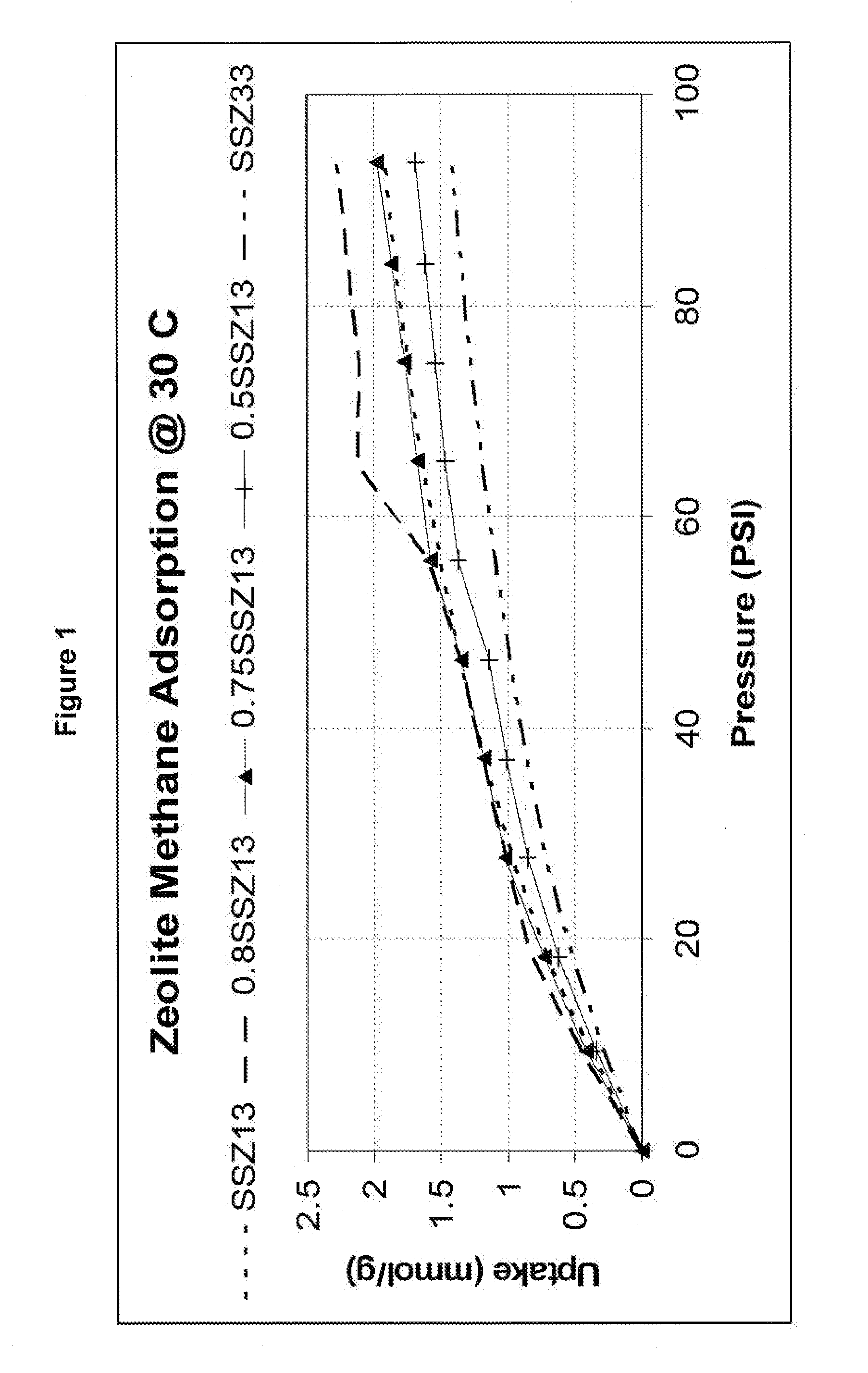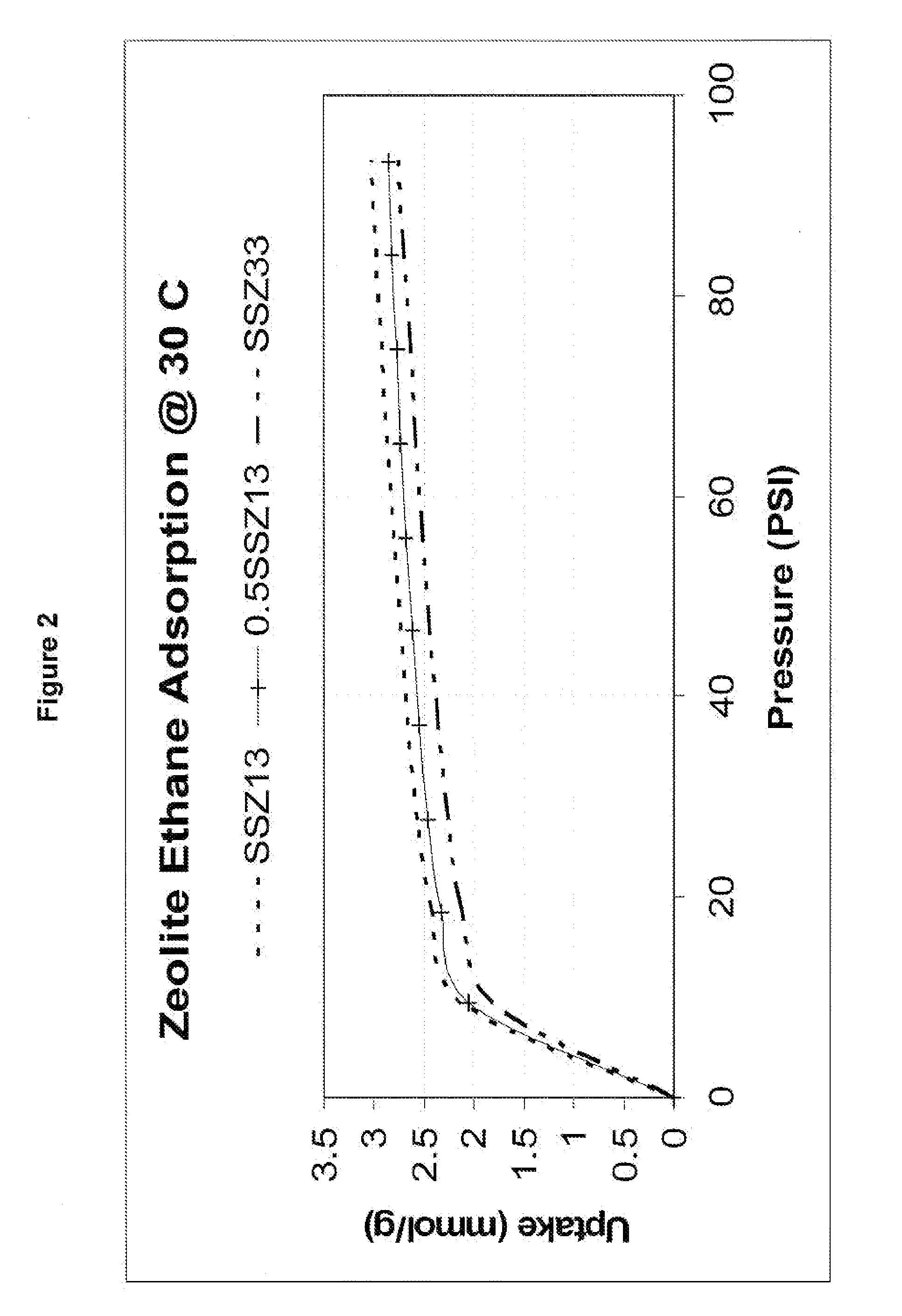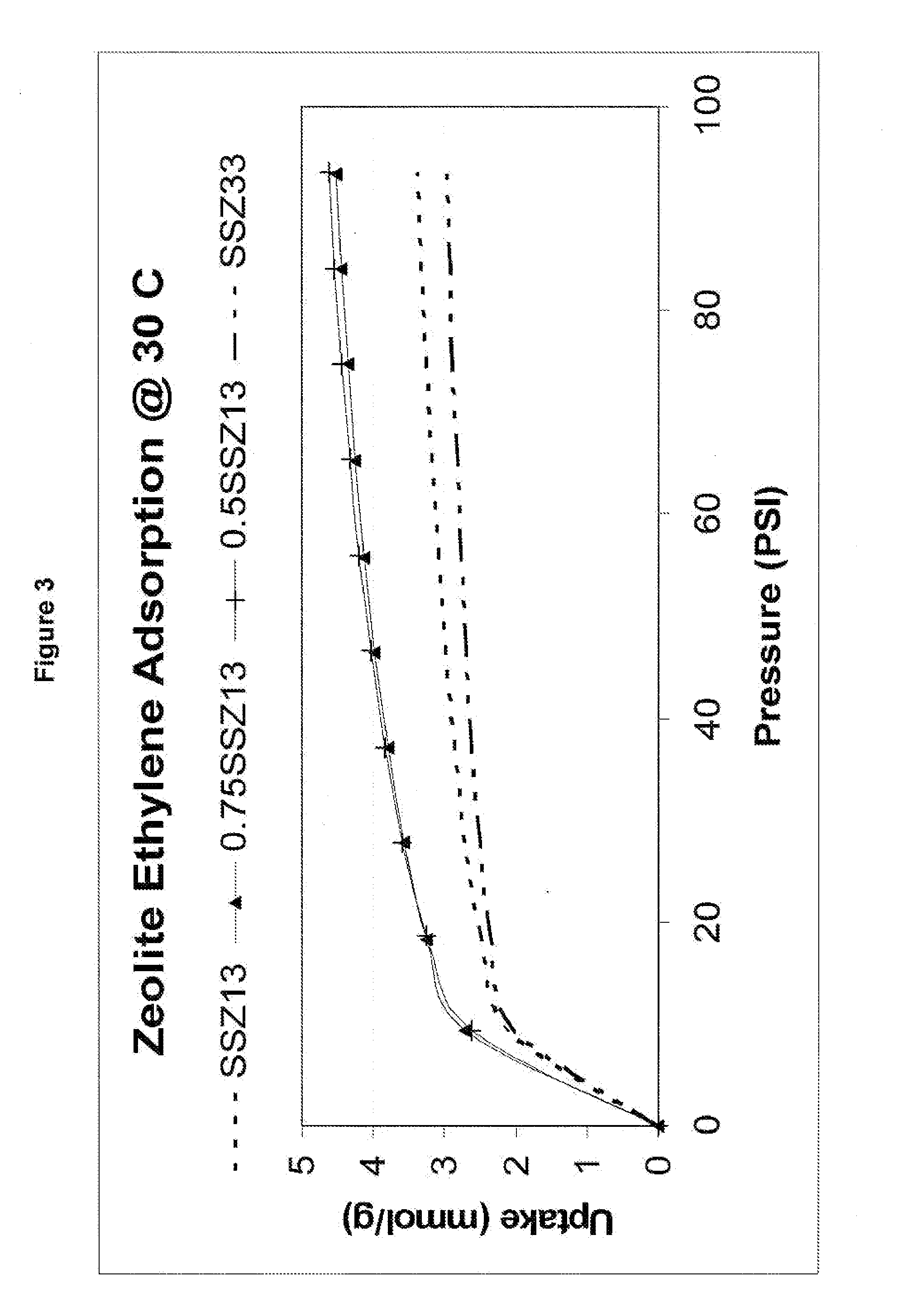Treatment of cold start engine exhaust
a technology for engine exhaust and cold start, which is applied in the direction of arsenic compounds, antimony compounds, chemical/physical processes, etc., can solve the problems of not being able to convert substantial amounts of pollutants, unable to convert hydrocarbons and other pollutants into harmless compounds, and the three-component control catalyst is not able to convert hydrocarbons and other pollutants to harmless compounds, etc., to achieve the effect of minimizing emissions
- Summary
- Abstract
- Description
- Claims
- Application Information
AI Technical Summary
Benefits of technology
Problems solved by technology
Method used
Image
Examples
example 1
[0060]The adsorption characteristics of zeolites were tested for their effectiveness for adsorbing hydrocarbon materials normally found in automobile exhaust streams. The SSZ-13 sample used in these tests had a silica / alumina ratio of 15.6. The SSZ-33 sample used in these tests had a silica / alumina ratio of 14.6.
[0061]Approximately 70 milligrams of a sample of zeolite SSZ-13 powder were loaded in turn into a VTI Scientific Instruments GHP-FS Gravimetric Sorption Analyzer. The sample preparation consisted of drying the sample at 350° C. for 300 minutes (or until the sample weight changed by less than 0.005% over a ten-minute period). The sample then was allowed to equilibrate with methane gas at 30° C. and 500 torr pressure for 30 minutes, or until the sample weight changed by less than 0.005% over a fifteen-minute interval. The pressure was then increased at 500 torr intervals up to a maximum of 5000 torr, with the sample being allowed to equilibrate with the methane gas after each ...
example 2
[0066]Example 1 was repeated using ethane as an adsorbent. The ethane uptake by the following zeolite samples, reported in mmole / gram, is plotted in FIG. 2.
Sample IDZeoliteSSZ13100% SSZ-130.5SSZ131:1 weight ratio SSZ-13:SSZ-33SSZ33100% SSZ-33
[0067]The data illustrated in FIG. 2 shows that the 1:1 mixture of SSZ13:SSZ33 (denoted 0.5SSZ13) had an ethane uptake at 30° C. which was intermediate between that of SSZ-13 and SSZ-33 alone.
example 3
[0068]Example 1 was repeated using ethylene as an adsorbent. The ethylene uptake by the following zeolite samples, reported in mmole / gram, is plotted in FIG. 3.
Sample IDZeoliteSSZ13100% SSZ-130.75SSZ133:1 weight ratio SSZ-13:SSZ-330.5SSZ131:1 weight ratio SSZ-13:SSZ-33SSZ33100% SSZ-33
[0069]The data illustrated in FIG. 3 show that the 3:1 and 1:1 mixtures of SSZ-13 and SSZ-33 had a much higher ethylene uptake at 30° C. than that of SSZ-13 and SSZ-33 alone.
PUM
| Property | Measurement | Unit |
|---|---|---|
| mole ratio | aaaaa | aaaaa |
| operating temperature | aaaaa | aaaaa |
| temperature | aaaaa | aaaaa |
Abstract
Description
Claims
Application Information
 Login to View More
Login to View More - R&D
- Intellectual Property
- Life Sciences
- Materials
- Tech Scout
- Unparalleled Data Quality
- Higher Quality Content
- 60% Fewer Hallucinations
Browse by: Latest US Patents, China's latest patents, Technical Efficacy Thesaurus, Application Domain, Technology Topic, Popular Technical Reports.
© 2025 PatSnap. All rights reserved.Legal|Privacy policy|Modern Slavery Act Transparency Statement|Sitemap|About US| Contact US: help@patsnap.com



